Key takeaways:
- Local business networking is about building meaningful relationships and tapping into collective knowledge, which can lead to unexpected opportunities.
- Effective team leadership involves clear communication, adaptability, and emotional intelligence to foster trust and collaboration among team members.
- Creating a strong team culture requires establishing core values, encouraging open dialogue, and recognizing achievements to motivate team members.
- Overcoming challenges in leadership includes addressing communication breakdowns, managing different work styles, and creating safe spaces for team discussions.
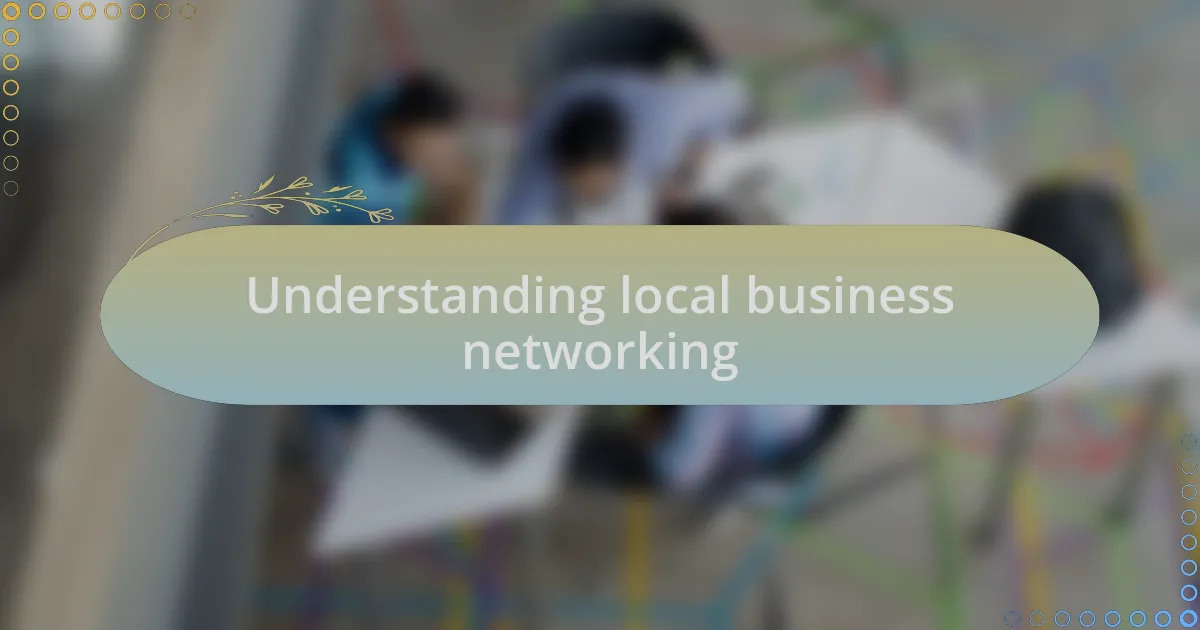
Understanding local business networking
Local business networking is more than just exchanging business cards; it’s about building meaningful relationships. I remember attending my first local networking event, feeling a mix of excitement and nervousness. Connecting with others who share similar challenges and aspirations created an atmosphere of camaraderie that helped ease my apprehensions.
The connections formed through these local networks often lead to unexpected opportunities. I once met a business owner who initially seemed an unlikely collaborator, yet we ended up co-hosting an event that significantly boosted our visibility. Reflecting on that experience, I can’t help but ask: how many opportunities have you overlooked simply due to a lack of engagement?
Moreover, networking allows us to tap into a wealth of collective knowledge. Every interaction can offer insights that may not be available through formal channels. This reminds me of a conversation I had with a mentor during a local meet-up; their advice on navigating a specific challenge changed my approach entirely. Isn’t it fascinating how a single conversation can reshape our perspective?
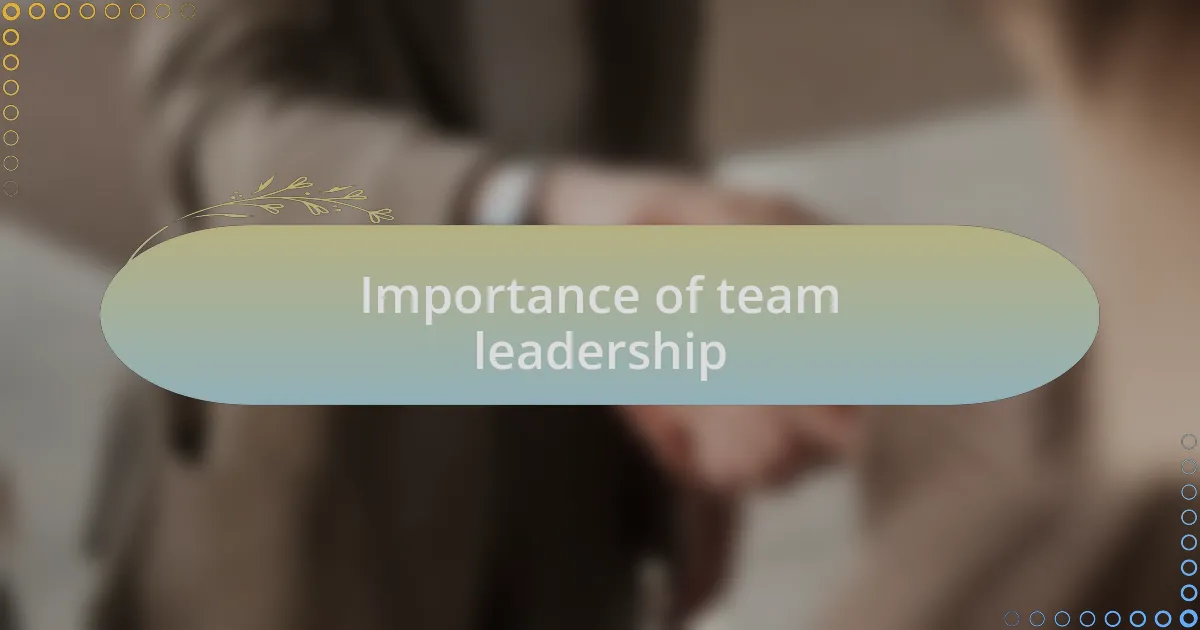
Importance of team leadership
Effective team leadership is crucial in any networking environment. I remember a time when I led a group of local business owners focused on mutual growth. By setting clear goals and fostering an open dialogue, we created a space where everyone felt valued and inspired to contribute. Do you think your team feels as empowered to share ideas?
When leaders demonstrate trust and encouragement, it can significantly enhance collaboration. On one occasion, I encouraged a quieter member to share their innovative marketing strategy. The moment they spoke up, their brilliant idea sparked a conversation that transformed our approach, underscoring how vital it is for leaders to cultivate an inclusive atmosphere. How often does your leadership style harness the diverse strengths of your team?
Ultimately, strong leadership helps navigate challenges effectively. I recall facing a major setback when one project didn’t go as planned. Thanks to the trust and confidence built within our team, we rallied together to reassess our strategies and devise a creative solution that not only salvaged the project but also strengthened our bond. Isn’t it incredible how leadership can turn obstacles into opportunities?

Key skills for effective leadership
Key skills for effective leadership
Effective communication is a vital skill for any leader. I still recall an early meeting where I stumbled while explaining our project’s vision. Instead of clarity, I noticed puzzled expressions around the room. That moment taught me the importance of articulating thoughts clearly and seeking feedback. How often do you pause to check that your team truly understands your message?
Another crucial ability is adaptability. During one project, unexpected changes in the market required us to pivot strategies quickly. I found myself reassessing our approach on the fly, engaging the team to brainstorm new ideas and solutions. This flexibility not only kept us on track but also created a sense of ownership among team members. Have you ever led your team through a sudden change?
Lastly, emotional intelligence cannot be overlooked. I remember a colleague who was visibly stressed during a challenging phase, and instead of pushing forward, I chose to check in with them. This small gesture fostered trust, and they later revealed how that moment of empathy reignited their motivation. Isn’t it interesting how understanding our team’s emotions can fundamentally impact team dynamics?
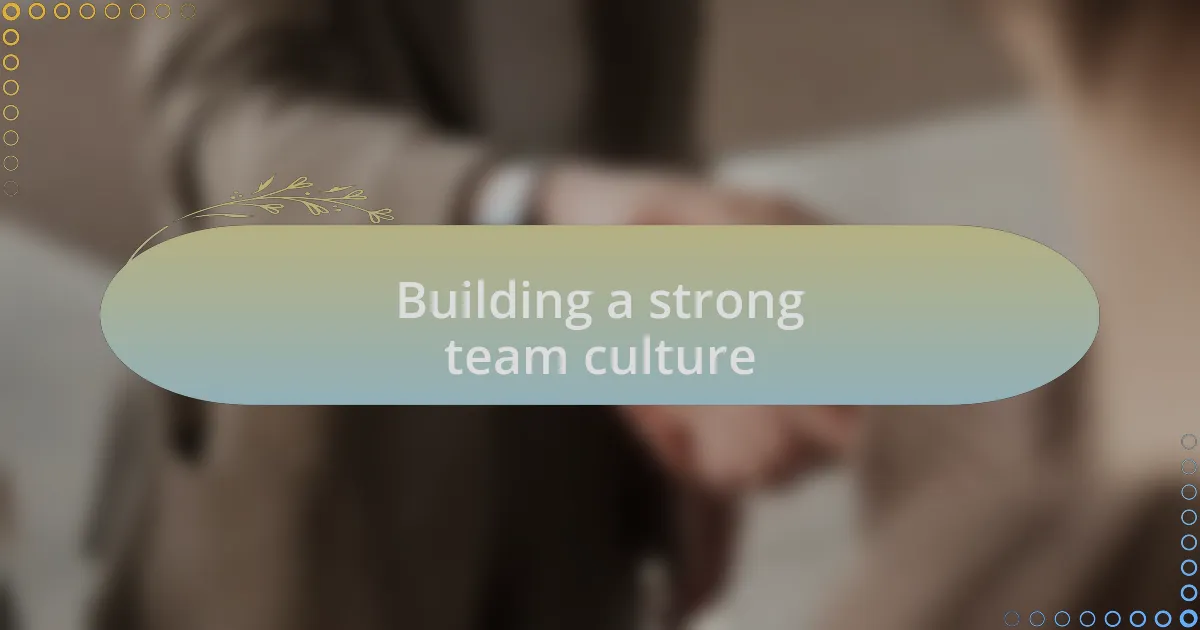
Building a strong team culture
Creating a strong team culture starts with establishing core values that everyone can rally around. In one of my previous team-building retreats, we took the time to define our values and what they meant to us individually. It was remarkable to witness how sharing our personal beliefs helped us connect on a deeper level. Have you ever had a moment where a simple discussion sparked a new sense of belonging within your team?
Encouraging open dialogue is another key aspect of fostering a healthy team environment. I remember introducing regular feedback sessions where everyone had the opportunity to voice their thoughts, concerns, and suggestions. Initially, it felt awkward, but over time, these discussions became a safe space for creativity and vulnerability. Doesn’t it feel rewarding when team members express themselves freely?
Recognition and celebration of achievements, big or small, also play a significant role in building a positive culture. One time, after completing a challenging project ahead of schedule, we decided to celebrate with a small team lunch. It wasn’t just about the food; it reinforced the notion that every contribution matters. Have you recognized your team’s efforts lately? Celebrating successes can truly strengthen bonds and motivate everyone to strive for greatness.
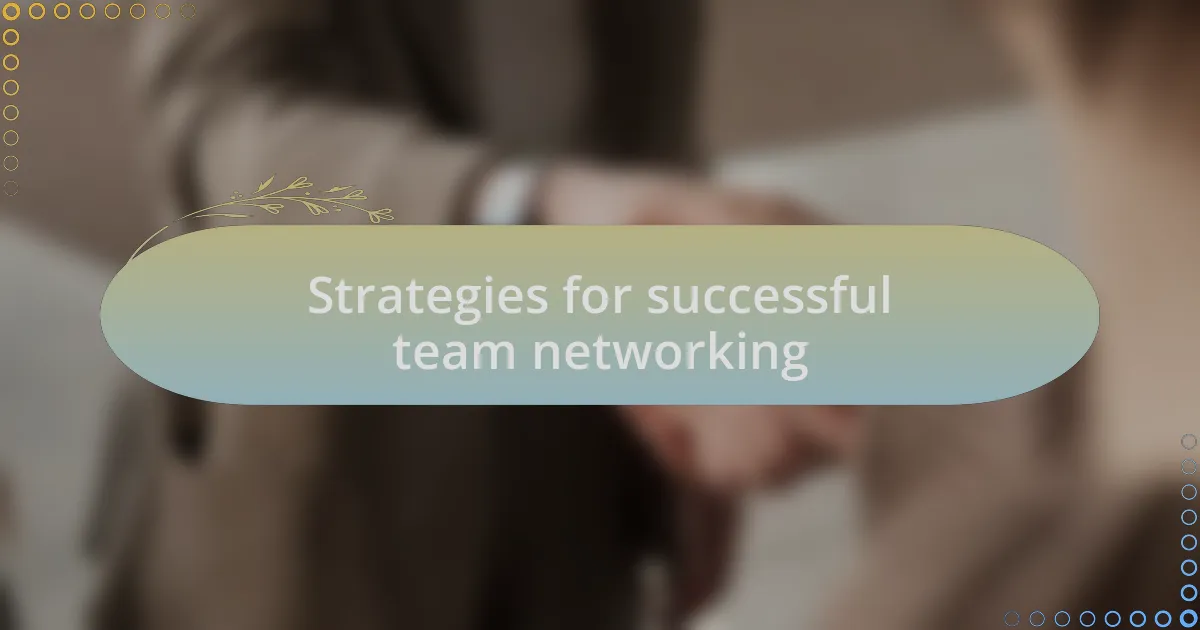
Strategies for successful team networking
Networking effectively within a team starts with understanding each member’s strengths and how they can complement one another. In my experience, organizing team-building activities that highlight individual talents not only boosts morale but also helps uncover unexpected synergies. Have you ever seen someone surprise you with a skill that changed the dynamic of a project?
Another strategy I found invaluable is creating opportunities for informal networking. I often scheduled casual coffee breaks or team lunches that allowed members to interact beyond their usual work roles. These moments fostered friendships and trust, paving the way for better collaboration. Have you taken the time to simply chat with your teammates in a relaxed setting?
Lastly, I believe in leveraging technology to enhance networking efforts. During a particularly challenging project, we utilized a shared platform for brainstorming ideas and keeping track of progress. It was remarkable how this tool created a sense of togetherness, even when we were working remotely. Have you considered how technology could bridge gaps in your team’s communication?
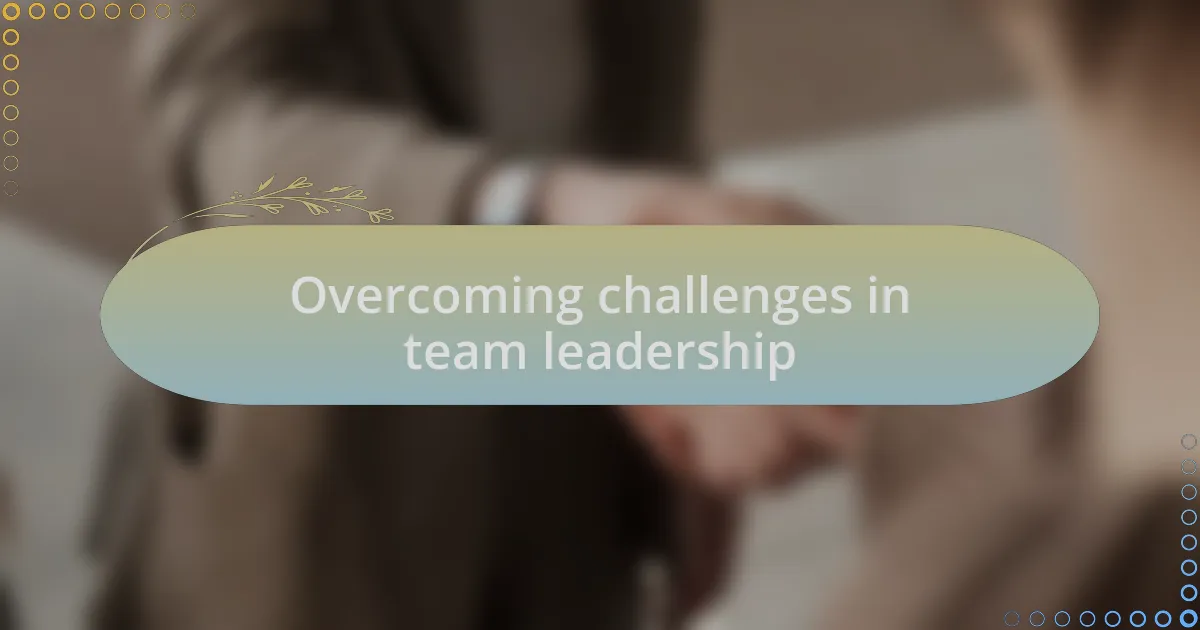
Overcoming challenges in team leadership
Leading a team comes with its fair share of challenges, and overcoming them requires both patience and strategy. I remember a particular moment when a crucial deadline was approaching, and tensions ran high. It was clear that stress was affecting collaboration, so I decided to hold a team meeting focused solely on expressing concerns and sharing solutions. This open forum not only alleviated some of the pressure but also allowed each member to feel valued and heard. Have you ever tried to create a safe space for your team to voice their feelings?
Communication breakdowns can also pose significant hurdles in leadership. I once faced a situation where misunderstandings led to duplicated efforts, creating frustration among team members. To tackle this, I introduced short daily check-ins where everyone updated their progress and priorities. This not only clarified expectations but also fostered accountability. It amazed me how a simple shift in communication routine could transform our workflow. Have you considered how a small change in your team’s communication could enhance productivity?
Another challenge I’ve navigated is dealing with differing work styles. Some team members thrive on structure while others prefer flexibility. I learned the value of customized task assignments that cater to individual preferences. For instance, assigning more open-ended tasks to creative thinkers while allowing detail-oriented members to tackle structured projects brought out the best in everyone. Have you identified how different styles can either clash or complement each other in your team? Embracing these differences can significantly boost team morale and output.

Personal insights from my experience
In my journey of leading a team, I quickly realized the importance of recognizing individual strengths. Once, I had a team member who felt undervalued despite their exceptional problem-solving skills. I took the time to highlight their contributions during a team presentation, which not only boosted their confidence but also inspired others to step forward with their ideas. Have you ever witnessed how recognition can transform the dynamics of your team?
Building trust was another critical lesson I learned. During a project, I faced resistance from a colleague who was skeptical about our direction. Instead of pushing my agenda, I invited them to share their thoughts openly. This candid conversation not only resolved the tension but also forged a stronger bond between us. Have you considered how fostering trust within your team might lead to more innovative solutions?
I’ve also found that celebrating small wins can have a profound impact. After completing a challenging phase of a project, I initiated a simple team lunch. The uplift in morale was palpable. It made me realize that taking a moment to acknowledge achievements—no matter how small—can reignite passion and motivation. Have you reflected on how small celebrations can keep your team energized?